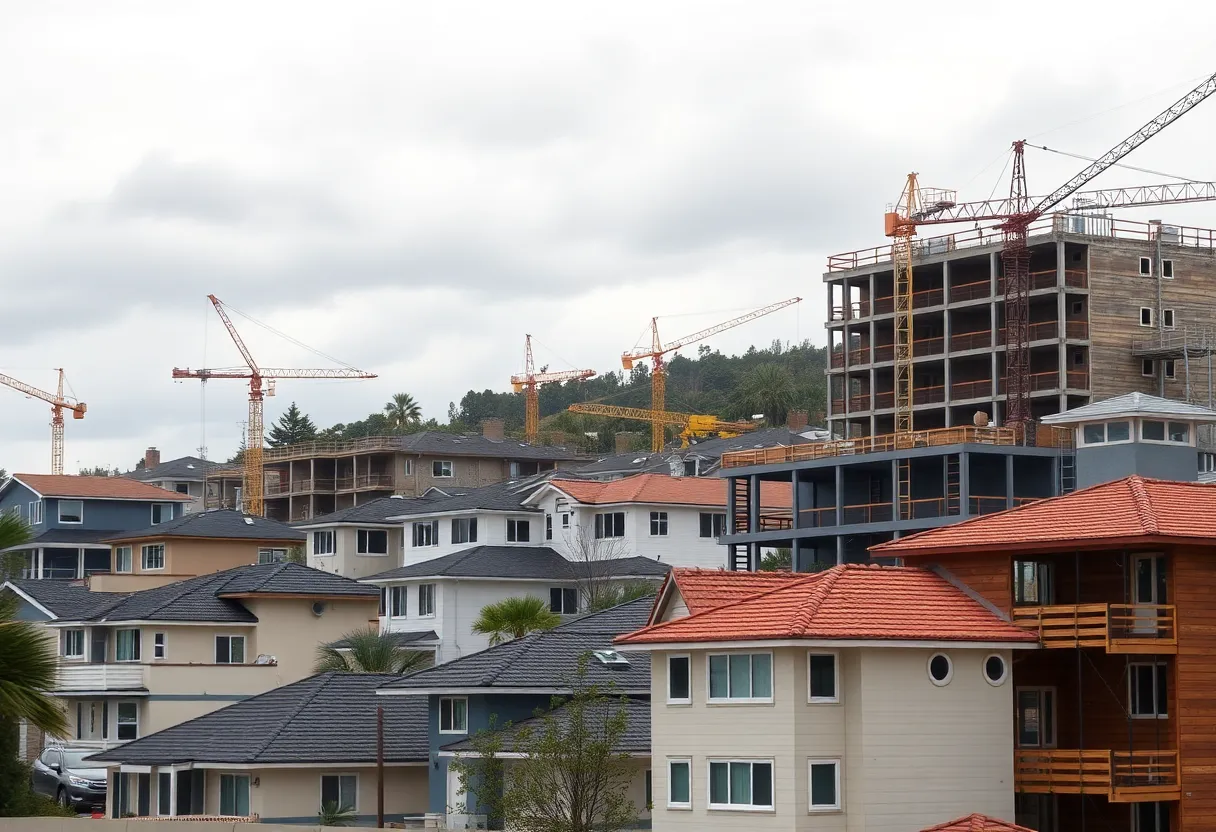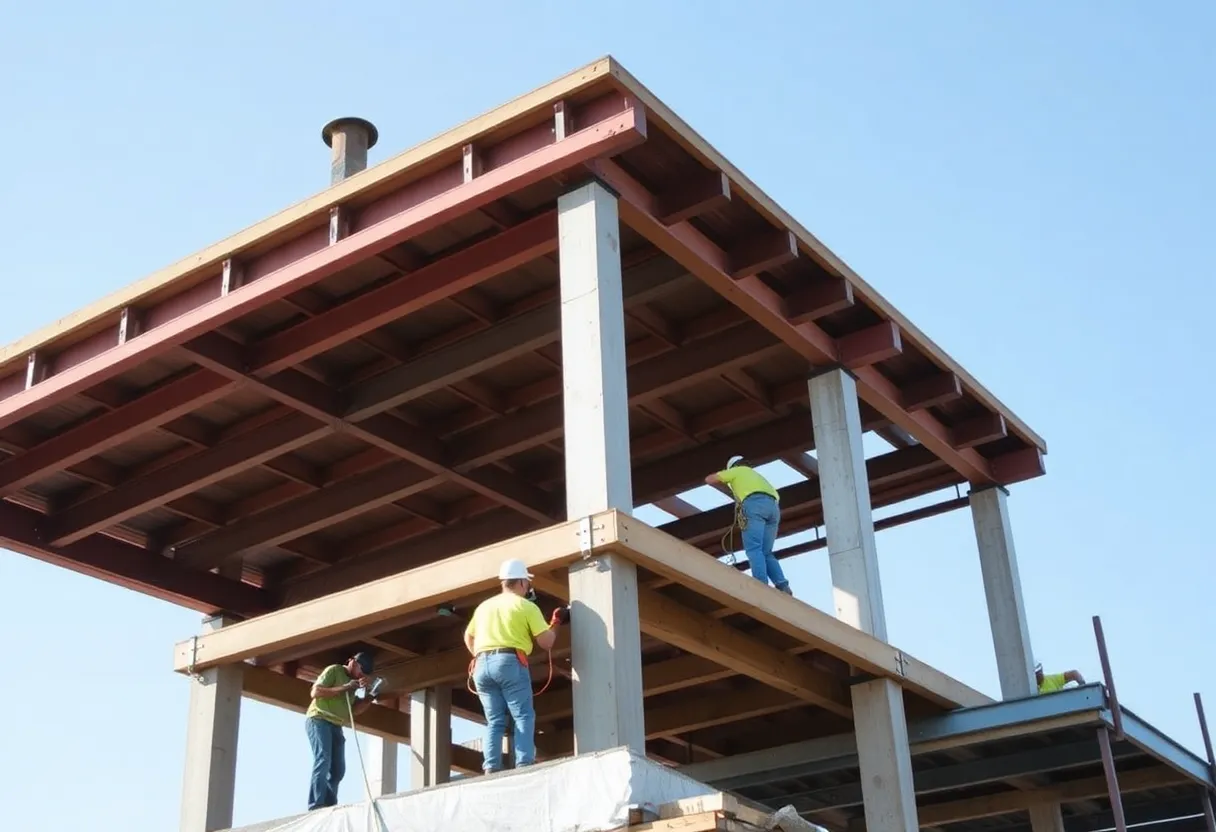News Summary
California’s recently enacted legislation AB 130 pauses state and local building code updates for six years, aiming to address the housing crisis. However, critics warn this freeze may compromise safety and sustainability standards, potentially hindering progress towards climate goals. Local governments now face restrictions on implementing more ambitious building codes, stirring debate among supporters and environmental advocates regarding housing affordability and energy efficiency. The long-term consequences of AB 130 reflect the complexities of managing California’s pressing construction needs alongside environmental objectives.
California’s AB 130 Stalls Building Code Updates Amid Housing Crisis
California’s recent legislation, AB 130, signed into law by Governor Gavin Newsom at the end of June, creates a significant pause in state and local building code updates for six years. This initiative is designed to tackle the state’s ongoing housing crisis by easing the path for construction but is facing substantial criticism.
Impact on Building Safety and Sustainability
Critics argue that the six-year freeze on building code updates could undermine essential safety and energy efficiency standards. Currently, buildings in California are responsible for approximately 25% of the state’s carbon pollution. This makes the need for updated building standards crucial for achieving decarbonization goals that align with California’s environmental objectives.
The latest energy code, which is set to take effect on January 1, 2026, encourages developers to focus on constructing all-electric homes equipped with advanced technologies such as heat pumps and heat-pump water heaters. Notably, the California Energy Commission has revealed that 80% of utility line extension requests in 2023 were for electric-only services, highlighting a clear shift towards electrification in the housing sector.
Restrictions on Local Governments
As part of AB 130’s provisions, local governments are now limited in their ability to enact more ambitious building standards, particularly those aimed at promoting all-electric new construction. Previously, 74 local governments had implemented reach codes that supported these sustainable practices, but under the new law, these innovative standards will be constrained after the upcoming October 1 deadline.
However, the law does allow emergencies to serve as exceptions, permitting local jurisdictions to update codes to safeguard health and safety. Some areas are considering using these provisions to replace outdated air conditioning systems with more efficient heat pumps, providing a potential avenue for responsive upgrades.
Clashing Perspectives on Housing Affordability
Supporters of AB 130 contend that this legislative move will stabilize the housing construction market and help tackle affordability issues that plague California residents. They argue that quickly updating building codes can disrupt the housing market and drive prices higher, making construction less viable. Legislative backers, including certain assembly leaders, have framed this pause as a necessary strategy to address these ongoing challenges.
On the other hand, environmental advocates caution that halting building code updates could stall progress on climate initiatives and hinder emission reduction efforts essential for a sustainable future. A significant concern remains that relaxing building code standards won’t necessarily translate into lower housing costs. Research from a 2015 UC LA study indicates that waiving building codes does not effectively lower construction expenses.
Long-term Financial Consequences
Historically, building codes in California have significantly contributed to energy savings, exceeding $100 billion over the last fifty years. Analysis from 2019 unveiled that constructing all-electric homes costs between $3,000 and $10,000 less than those utilizing gas connections, further emphasizing the potential financial benefits of adhering to modern building standards.
With the implementation of AB 130, there is a concern that households across the state could experience tens of millions in lost utility savings. As local governments prepare to navigate these new constraints, anticipation grows for subsequent negotiations focused on additional funding and legislative measures to promote electrification beyond the reach of AB 130.
Looking Ahead
The full impact of AB 130 remains to be seen. As local governments strategize on how to adapt to the law’s restrictions, the construction industry and environmental advocates continue to monitor this evolving situation closely. The quest for resolving California’s housing crisis and achieving climate goals is poised for a complex journey ahead.
Deeper Dive: News & Info About This Topic
Additional Resources
- Canary Media: California’s AB 130 Stalls Building Code Updates Amid Housing Crisis
- Politico: Housing Dividing California Democrats Over Newsom’s Approach
- Los Angeles Times: The Most Substantial Change to California’s Building Laws in Generations
- National Law Review: California Construction Employers May Rely on Legal Exemption to Drug Test for Marijuana
- BAM Law: California Construction Company Faced Labor Law Violation Allegations
Author: Construction FL News
The FLORIDA STAFF WRITER represents the experienced team at constructionflnews.com, your go-to source for actionable local news and information in Florida and beyond. Specializing in "news you can use," we cover essential topics like product reviews for personal and business needs, local business directories, politics, real estate trends, neighborhood insights, and state news affecting the area—with deep expertise drawn from years of dedicated reporting and strong community input, including local press releases and business updates. We deliver top reporting on high-value events such as the Florida Build Expo, major infrastructure projects, and advancements in construction technology showcases. Our coverage extends to key organizations like the Associated Builders and Contractors of Florida and the Florida Home Builders Association, plus leading businesses in construction and legal services that power the local economy such as CMiC Global and Shutts & Bowen LLP. As part of the broader network, including constructioncanews.com, constructionnynews.com, and constructiontxnews.com, we provide comprehensive, credible insights into the dynamic construction landscape across multiple states.





